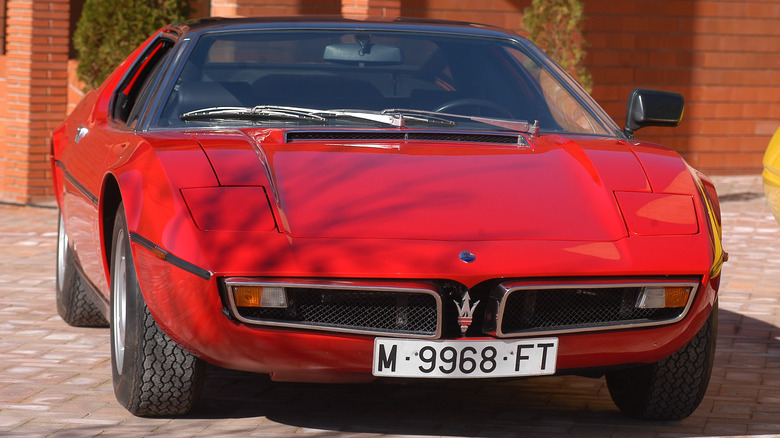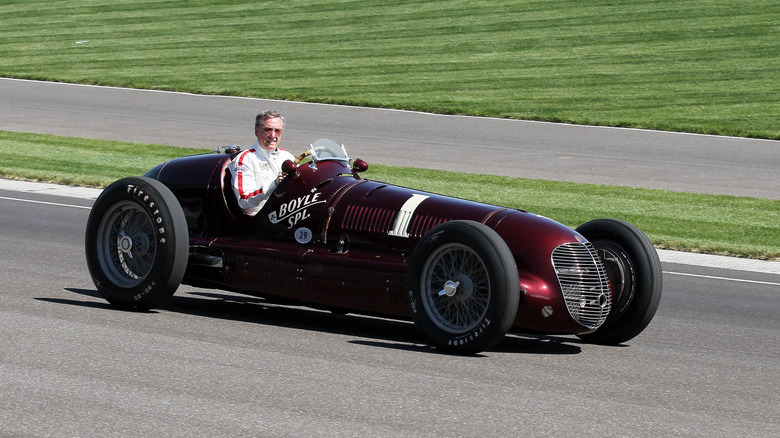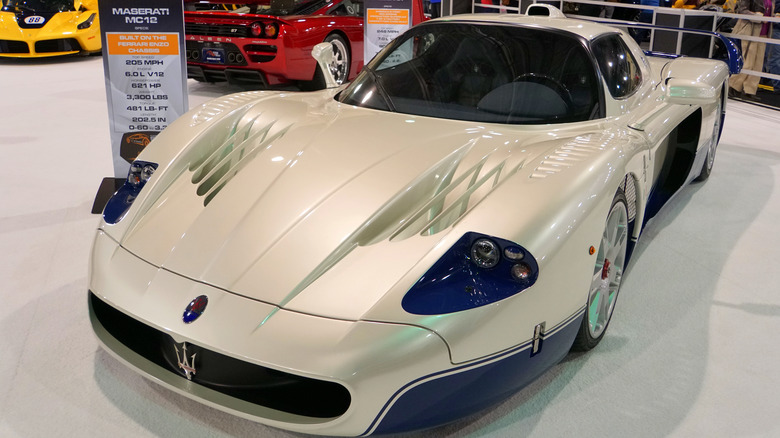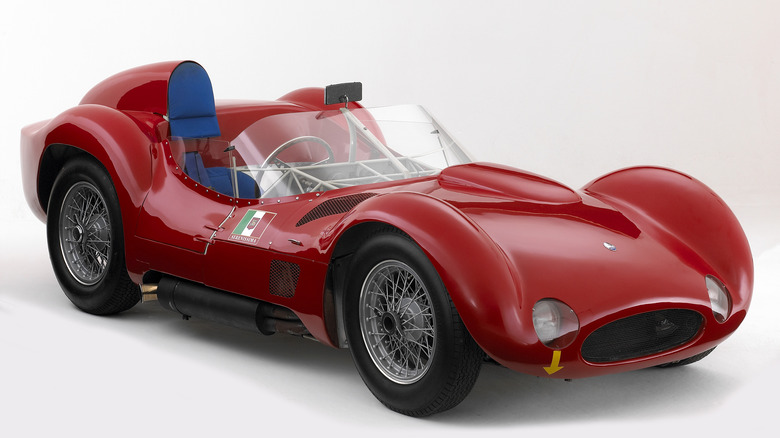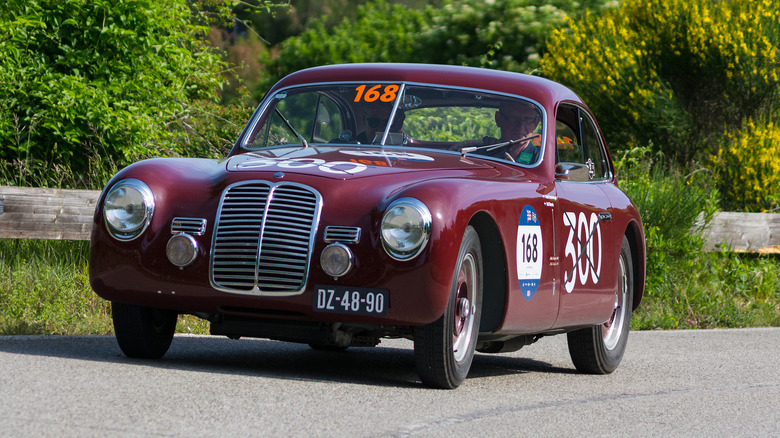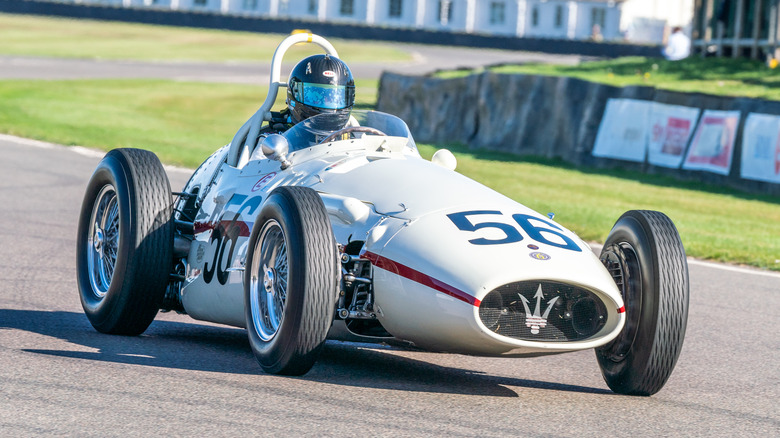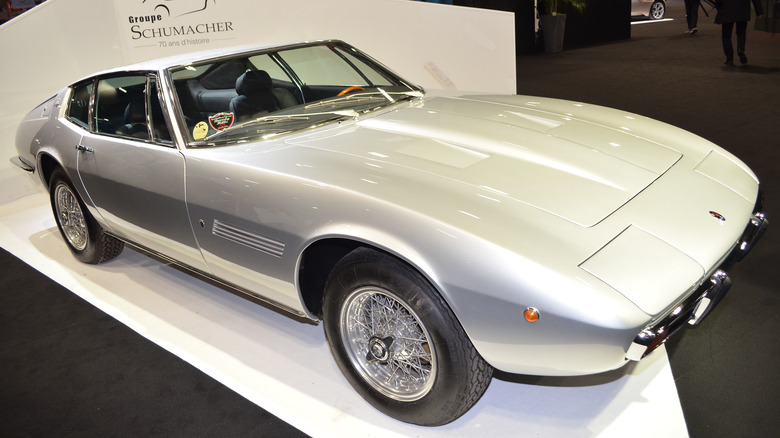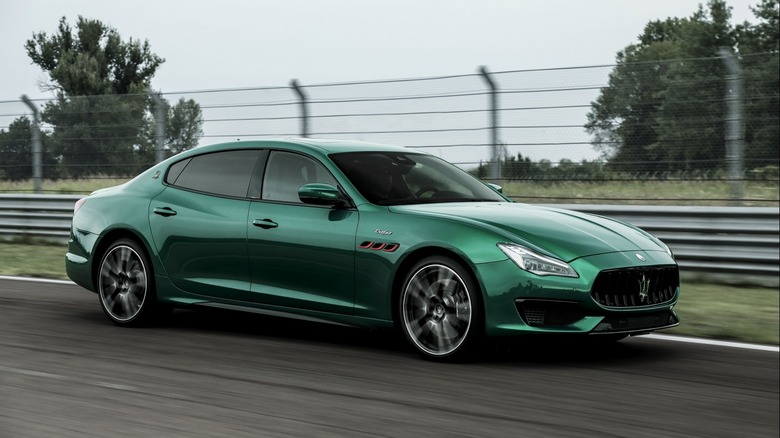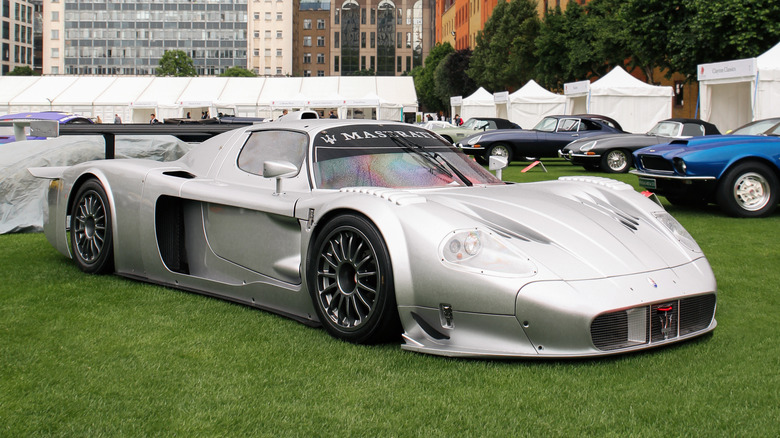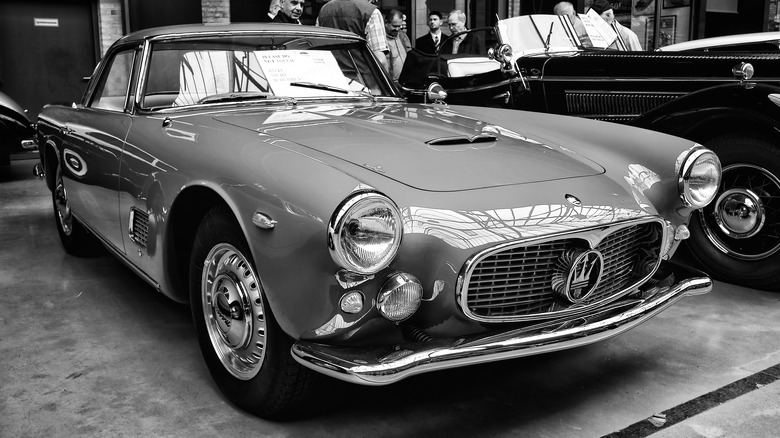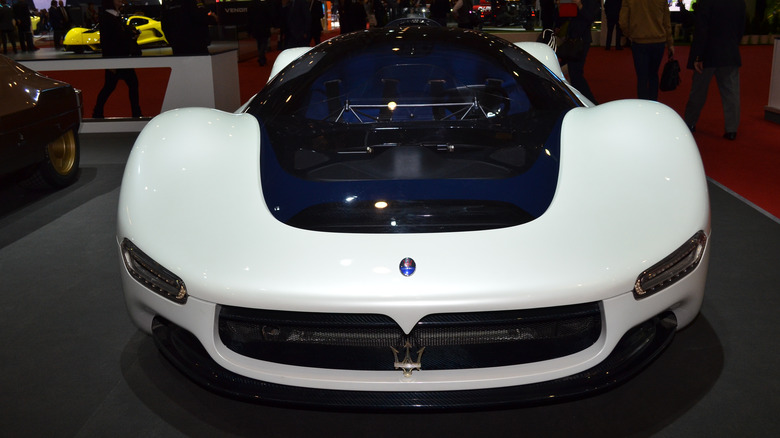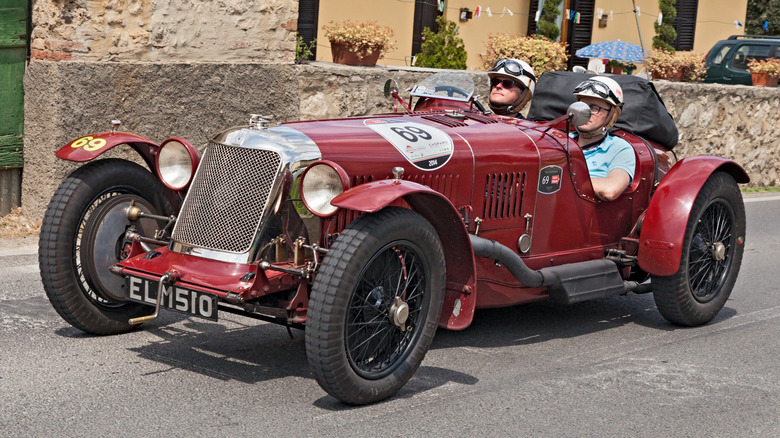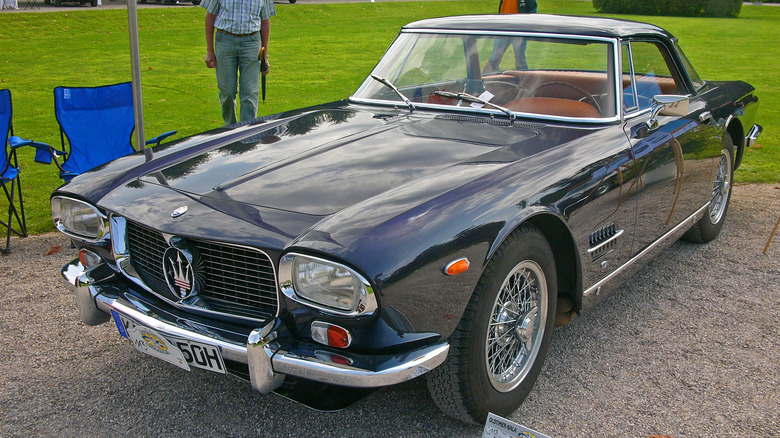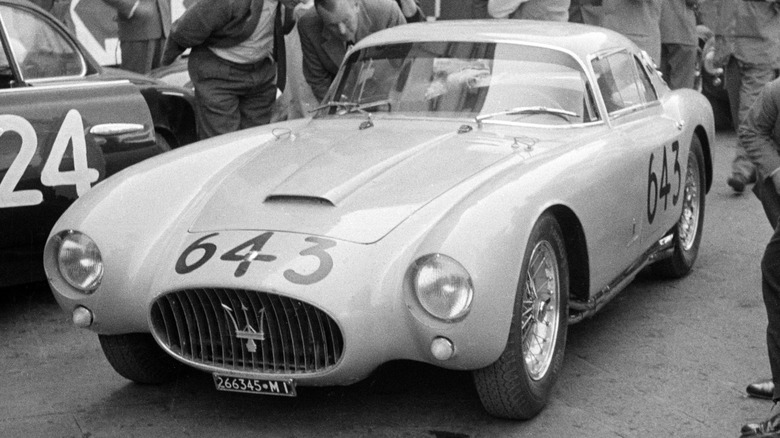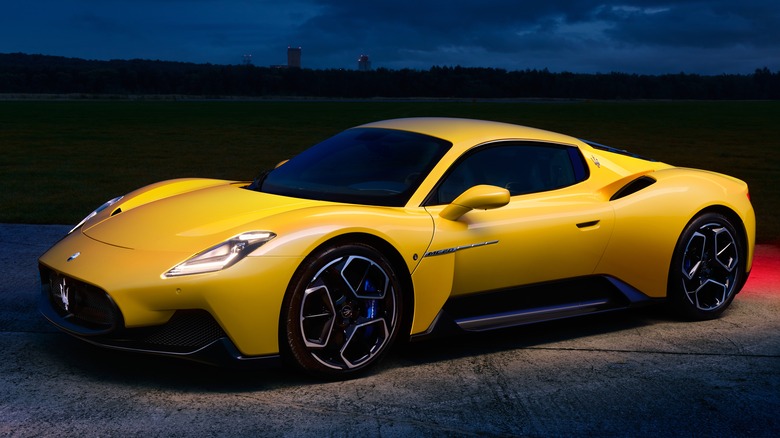The 15 Best Maseratis Of All Time
Italian manufacturer Maserati can trace its roots back to the 1910s, when three brothers founded a company that made spark plugs and aircraft engine parts. After the First World War, the brothers decided to expand their business to make not only parts, but entire automobiles. Thus, the Maserati car company as it's known today was born. Two of the brothers, Ettore and Ernesto, were engineers, and a third brother, Alfieri, was a racing driver. He joined the company shortly before the brand unveiled its first-ever car, the Tipo 26.
As per Britannica, Maserati saw a lot of early success in racing, eventually diversifying and developing luxurious grand tourers to expand its lineup in the 1940s. From there, the brand has gone through a number of ownership changes, but has always remained a frontrunner in the world of high-end performance cars. Since 2021, it's been under the ownership of the Stellantis Group, a multinational conglomerate that also owns brands like Jeep, Alfa Romeo, and Dodge. Stellantis has committed to giving the brand at least ten years of investment to ensure its continued success into the future, with the intention that it can continue adding to its already world-leading catalog of performance and luxury cars.
Maserati 8CTF
One of the key reasons that Maserati was able to make its mark on the car industry from its earliest days was its consistent successes in motorsport, and the 8CTF played a big part in that. The car was built in response to a change in Grand Prix racing rules that limited engine size to a maximum of 3,000cc, making the brand's previous racers illegible for competition. Unveiled in 1938, almost as soon as it began competing, the 8CTF began to win races.
Its most high-profile win was at the 1939 Indianapolis 500, at the hands of racing driver Wilbur Shaw, who was just 27 years old at the time. The win brought a huge amount of international attention for Maserati and helped cement the brand's name as one to watch in America, according to the brand itself. The following year, as per Maserati, three 8CTFs were entered into the race, and Shaw won again. He would go on to become one of the all-time most successful drivers at Indianapolis, with three career wins and three second places to his name.
Maserati MC12
The Ferrari Enzo took the world by storm when it debuted in 2002, astounding owners and critics alike with its F1-inspired aerodynamics and naturally-aspirated V12 engine. At the time, Maserati was owned by Ferrari, and was given access to the Enzo platform. The company developed its own car based on the Enzo's chassis and engine. That car was the MC12, an ultra-limited flagship model of which just 50 units would ever be made. As per Motor Authority, it was primarily developed to allow Maserati to enter the FIA GT Championship, but its cutting-edge performance and distinctive looks meant it also became one of the company's most iconic road cars ever.
Although it wasn't a pure track car, it was brutally fast, and even today it remains the fastest-accelerating Maserati road car ever. As per Maserati, accelerating from 0-200 km/h (124 mph) took less than ten seconds, a figure that many of today's leading performance cars would struggle to match. With such incredible performance and limited availability, it's no surprise that buying an MC12 was no easy task. Buyers had to be specially selected from Maserati's most loyal circle of clients, and then according to Road & Track, had to fork out an asking price of around $1.5 million to complete their purchase.
Maserati Tipo 60/61 Birdcage
The Tipo 60/61 was developed for privateer teams competing in the two-liter category of sports car racing, and it's famous mostly for its unusual design. In response to British car manufacturers moving away from traditional ladder frame chassis and towards expensive monocoque chassis, Alfieri Maserati proposed a more cost-effective solution. Maserati didn't have the funds to develop a monocoque, so instead he created a space frame chassis made up of over 200 individual steel tubes. He also focused on bending the rules for better aerodynamics, with a particular focus on the car's windshield.
According to Maserati, racing rules of the time stated that each windshield had to be a certain size, but there were no rules on its function. So, Maserati decided to incline the windshield of the Tipo 60 as far back as possible, so that it no longer protected the driver but led to an increase in aerodynamic efficiency. This gave the car a substantial advantage on the track and caused some controversy at the time because of the Tipo 60's unusual shape. Nevertheless, orders for the car began to pour in, and eventually factory driver Sir Stirling Moss suggested that the chassis could handle more power. As per Motortrend, the Tipo 61 was then developed the following year, with an uprated power output of 250 horsepower made possible through the use of a larger, more advanced engine.
Maserati A6 1500 Gran Turismo
Unveiled at the 1947 Geneva Motor Show, the A6 1500 Gran Turismo marked the first in a long line of grand touring models that continues up until the present day. It featured styling by Pinin Farina and a luxurious interior with unique touches like a clock built into the lid of the glove box. It was also one of the earliest models to make use of the Maserati Trident logo's new-found prestige. As per Maserati, Trident badges could be found all over the car, including on the brake and clutch pedals.
The 1500 was the first Maserati to be built primarily for the road rather than the race track, and with 65 horsepower its performance was nowhere near that of its racing counterparts. Still, critics and clients were highly impressed with the car, and it helped set the blueprint for Maserati's future road-focused models. A total of 61 examples were made between 1947 and 1950, although significantly less are confirmed to have survived to the present day.
Maserati 250F
When it comes to circuit racing, it doesn't get much more high-profile than Formula 1. The Maserati 250F was developed specifically for F1, and ended up playing a key part in one of the sport's greatest rivalries in the Fifties. The car was unveiled in time for the 1954 season, and right away Argentinian legend Juan Manuel Fangio took the car to victory, winning the driver's title that year. A young Stirling Moss had also spent all of his winnings on buying one, entering the championship and quickly becoming one of the frontrunners.
In an interview with Top Gear, Moss described the car as being "very user-friendly," and having "a lovely balance to it, even in the wet." After 1954, Fangio was poached by the Mercedes team, but switched to Ferrari just a few months after. From then on, a historic battle ensued between Fangio and Moss for dominance, with both men changing teams throughout the following few years. By 1957, Fangio was again at the wheel of a 250F, and scored a second driver's championship title, no mean feat for a car that was at this point three years old.
Maserati Ghibli (AM115)
The Ghibli nameplate has recently been brought back into use for Maserati's entry-level sedan, but in its original incarnation, the car was a classically-styled grand touring coupe. It was styled by a young Giorgetto Giugiaro while he was working at the Ghia studio, and is still regarded as one of his greatest ever designs. The car features a 2+2 seating arrangement, although it was originally designed as a pure two-seater. According to Maserati, it borrowed the V8 engine from the Quattroporte sedan but featured a new dry-sump lubrication system to allow it to fit under the Ghibli's low hood.
In the five years it was on sale, the Ghibli attracted a lot of attention, with nearly 800 'regular' Ghiblis and over 400 sportier SS models produced, according to Maserati. It faced tough competition from its rivals, as it was meant to directly compete against the likes of the Ferrari Daytona and Lamborghini Islero. The rarest of all the Ghibli variants is the SS Spyder, of which only 125 units were ever produced. These SS Spyders featured a 4.9L V8 engine that made 335 horsepower and topped out at 285 km/h (177 mph).
Maserati Quattroporte Trofeo
The latest and greatest in the Quattroporte lineup is the Trofeo, a 572 horsepower super-sedan that Top Gear claims is the closest anyone can get to buying a four door Ferrari. It tops out at 203 mph, making it one of the fastest road-legal Maseratis ever made. It might not feature the same cutting-edge interior as rivals from Porsche and Mercedes-Benz, and it's not as laden with tech features, but the simple fact is that the Trofeo will leave them all standing on the autobahn.
Buying a Quattroporte Trofeo doesn't come cheap; in fact, it's exactly the opposite, as its starting price of close to $150,000 puts it on par with a well-optioned Mercedes S-Class. Maserati hasn't revealed any sales figures yet, but it's very unlikely that the Trofeo will sell very many units. That doesn't matter though, as the Trofeo has already carved its place in history as a swan song for the Quattroporte's traditional V8 engine, which is likely to be discontinued as Maserati makes the switch to electrification over the next decade.
Maserati MC12 Versione Corsa
Maserati's flagship MC12 hypercar had buyers and critics alike impressed with its balance of performance and luxury, but there were a few clients who wanted something even faster. To address those concerns, the brand developed the Versione Corsa, a track-only edition of the MC12 that was closely related to the FIA GT Championship-winning GT1 race car. The main difference between the Versione Corsa and its competition sibling was that it wasn't limited by racing regulations, and so included a more powerful 755 horsepower V12 engine.
The road-going MC12 already boasted cutting-edge performance figures, but the Versione Corsa improved on them significantly. As per Maserati, accelerating from a standstill to 200 km/h (124 mph) now took just 6.4 seconds, and its large rear wing and revised aerodynamics allowed the car to produce considerably more downforce. Only 13 examples of this track-day monster were made, 12 to be sold to customers and one that was used exclusively for development purposes.
Maserati 3500 GT
In order for a performance car manufacturer to be successful, it must not only prove itself in competitions but also produce excellent road cars that entice clients and provide revenue to continue racing. The 3500 GT was critical in making that happen for Maserati, as it was the brand's first mass-produced car. After seeing plenty of competition success in 1957, the company decided it was time to end on a high and withdraw from competitive racing altogether to focus on making road cars.
Unveiled that year, the 3500 GT was the first model to be debuted after the change, and it was very commercially successful. It was styled by Carrozzeria Touring and featured an aluminum body attached to a patented tubular steel frame. According to Bonhams, it was available with either a 220 horsepower straight-six engine or an upgraded 235 horsepower unit, and could hit a top speed of around 220 km/h (136 mph). Close to 1,400 examples of the car left the factory between 1957 and 1964, and its success meant that Maserati could recover from the period of financial instability that it had found itself in during the Fifties.
Maserati Birdcage 75th
Unveiled at the 2005 Geneva Motor Show, the Birdcage 75th concept car had two purposes: to celebrate the 75th anniversary of its designer Pininfarina, and to commemorate the long partnership between Pininfarina and Maserati. Although it was only a one-off concept, it is fully functional, with the chassis and 6.0L V12 engine taken from an MC12 GT1 car, as per Pininfarina. It was developed in conjunction with tech giant Motorola and used innovative 3D renders to cut its design phase down to a period of just two months.
Apart from its distinctive looks, the Birdcage 75th is also notable for its use of a one-piece canopy that opens upwards and functions as a door to allow the driver to get in and out of the car. Both the chassis and the exterior are made from carbon fiber and the windshield is made from perspex, in an effort to keep the car's weight to a minimum. According to Drive Australia, the Birdcage 75th won several industry awards for its design, including the Louis Vuitton Classic Concept Award in 2006.
Maserati Bora
One of the many changes of ownership over the course of Maserati's history saw the brand sold to French carmaker Citroën. The first model to emerge under Citroën ownership was the Bora, a two-seater coupe which was also the first mid-engined Maserati ever. Designed by Giugiaro, the car sports the distinctive wedge shape that had become prevalent among Italian manufacturers during the Seventies.
It featured a number of technological innovations thanks to the company's new French ownership, with the most notable being the use of a hydraulic system that operated the adjustable headlights, driver's seat, and pedals. Despite its fashionable looks and technological advancements, sales of the Bora were slow thanks to the oil crisis that unfolded shortly after the car was released (as per Top Gear). Maserati claims that plans to enter the car into racing competitions were also abandoned thanks to difficulties with homologation requirements. In total, only 564 Boras were ever produced.
Maserati Tipo 26
The first-ever car produced by the Maserati company was the Tipo 26, a two-seater designed for road racing. It was entered into a number of national and international races, one of which was the Targa Florio, which it won at the hands of Alfieri Maserati himself. It also competed at the Grand Prix and Mille Miglia, where it showed a consistently strong pace thanks to the founding brothers' years of experience making parts for other leading Italian manufacturers. By the late '20s, a revised version of the car, the 26B, had been developed.
The 26B featured a number of upgrades over the original car, with new magnesium-alloy components that reduced weight and added strength according to Christie's. Unfortunately, shortly after this car was unveiled, the company suffered the first of what would be many financial crises, surviving mostly thanks to its popularity among wealthy Maserati clients who helped fund the development of a new Tipo 26-based prototype, the V4. This cash crunch meant that Maserati struggled to make any new car that was reliable enough to race, and even though the Tipo 26 was unveiled in 1926 (according to Christie's), it would take until 1931 before a replacement car, the 8C, was offered for sale.
Maserati 5000 GT
After the success of the company's first mass-produced grand tourer, the 3500 GT, a few wealthy clients began asking Maserati for something even better. One of those clients was the Shah of Persia, who requested a faster, more luxurious version of the 3500 GT built with racing components. Chief engineer Giulio Alfieri obliged, and created the 5000 GT, an ultra-exclusive car that saw only 34 examples leave the factory.
Because this was a commission-only car, buyers were free to choose the body style that they wanted. As a result, bodies for the 5000 GT were built by eight different coachbuilders, including Ghia, Pinin Farina and Bertone. Every 5000 GT was based on a reinforced 3500 GT chassis and featured the V8 engine from the 450S race car. This gave the car unprecedented performance for a road car of the era, with a top speed of 270 km/h (167 mph), making it unofficially the fastest car in the world. The official fastest car at the time was the Aston Martin DB4 GT, which had only achieved a speed of 152 mph, making the 5000 GT significantly quicker than the official record holder.
Maserati A6GCS Berlinetta Pinin Farina
Often regarded as one of Maserati's most visually striking cars, the A6GCS Berlinetta Pinin Farina isn't actually an official Maserati at all. It was based on the open-seater A6GCS competition car, which had been highly successful in racing and was a favorite among the company's privateer clients. According to Carrozzieri Italiani, after the 1952 Mille Miglia race was run under torrential rain, those clients began asking for an enclosed version of the car and consulted with renowned design studio Pinin Farina.
Maserati themselves could not directly commission Pinin Farina to make the car, as the studio had only recently signed an exclusive contract with the brand's arch-rivals Ferrari. However, the contract didn't stop Pinin Farina from working independently with private owners, and so a Rome-based Maserati dealer bought six A6GCS cars and asked Pinin Farina to convert them. The company ended up converting four, one of which was shown off at the 1947 Turin Auto Show, much to the dismay of Ferrari.
Maserati MC20
The MC20 represents the start of a new era at Maserati, since it's the brand's first mass-produced supercar. It aims to compete directly against rivals from the likes of Aston Martin and McLaren, and initial reviews suggest it's a very strong contender. Car and Driver magazine recently reviewed the car and praised its lightning-quick acceleration and sharp handling, giving it an excellent 9.5/10 rating. It's the first mid-engined sports car the brand has produced since the MC12, except unlike its predecessor, the MC20 is based on an all-new architecture underneath.
According to Car and Driver, pricing for the car starts at around $215,000 in the US, and the first deliveries have already been shipped out to customers. It might have only been unveiled in late 2020, but the car is already on its way to becoming one of the greatest Maseratis of recent years. Let's hope it signals a return to form for the brand after several years of underinvestment, and that Maserati will continue to produce cars that are just as captivating after it makes the switch to electrification over the coming years.
